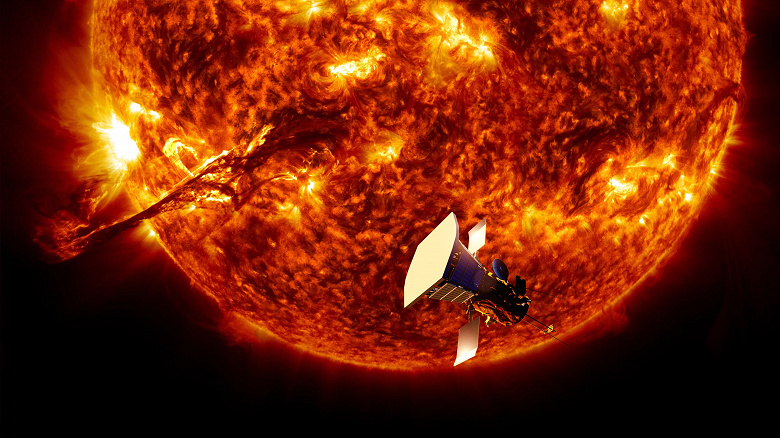For nearly six years, NASA's Parker Solar Probe has been approaching the Sun. The culmination of this journey will be December 2024
In August 2018, NASA launched a mission aimed at studying the Sun. The Parker Solar Probe spacecraft zoomed past our star at a distance of about 42.6 million kilometers from its «surface». This became a new record, surpassing the achievement of the Helios-2 spacecraft, which flew at a distance of 44 million kilometers from the star in 1976.
The Parker Solar Probe mission, which began five years ago, has already made several approaches to the Sun, the device even «touched» its photosphere is 13 million kilometers away. The closest approach of the device to the Sun is expected in December 2024 — only 6.16 million kilometers from its «surface». Here the probe will have to cope with intense radiation and temperatures of about 1400 degrees Celsius.
«We can say that we are “landing” to the star», — notes project researcher Parker Nour Raouafi.
Although 6.16 million kilometers may seem like a lot, it is only 4% of the distance between the Earth and the Sun, a distance known as an astronomical unit (149.6 million kilometers). The Parker Solar Probe has already carried out several gravity maneuvers around Venus to reduce its orbit and approach the Sun. In November, the probe will pass by Venus for the last time, setting off on a new record-close trajectory.
The probe survives these encounters and high temperatures because the Sun's corona, its outer atmosphere, is not particularly dense. Thanks to this, Parker Solar Probe is not greatly affected by the temperatures of the star. In addition, the probe is protected by a heat shield, which places it in the shade, and a cooling system.
Parker Solar Probe is also moving at incredible speed — it is the fastest spacecraft in history. The probe's speed in space is approximately 193,000 kilometers per hour. To put this into perspective, Parker Solar Probe could travel from Philadelphia to Washington DC in just one second. This means that its stay near the Sun is very short, since the device would not be able to withstand the radiation and heat of the star for an extended period of time.
The Parker Solar Probe mission has already significantly improved our understanding of solar particles, the origin of solar winds, and energy flows in the Sun's outer atmosphere. During closest approach, scientists will closely study different types of waves in the solar winds.
«We don’t know exactly what we will find, but we will look for waves associated with the temperature of the solar winds. We are expected to detect many different types of waves, which will help us better understand these complex processes», — said NASA Associate Administrator for Science Nikki Fox.

